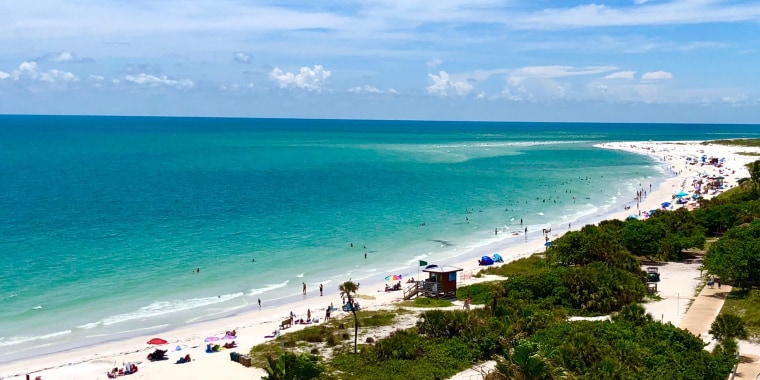A room with a blue view can help you feel less blue.
The Pantone Color of the Year for 2020 is "Classic Blue" and there's evidence the soothing hue found in nature can have a powerful effect on human psychology.
Living in a neighborhood where people have lots of opportunity to gaze at blue spaces — bodies of water like the sea — is associated with lower levels of stress, the authors of a 2016 study found. They didn't see a similar effect with green spaces, contradicting other studies.
The findings may help city planners and others find ways to boost mental health in urban settings, said co-author Amber Pearson.
“It’s kind of intuitive that you spend time gazing out at the water and it’s relaxing,” Pearson, a health geographer and assistant professor at Michigan State University, told TODAY.
“We’re living in an increasingly urbanized world. A lot of wealthy countries have over 85 percent of the population living in cities… so if we can find features in cities that promote mental health, this is really going to help us into the future.”
The study focused on Wellington, New Zealand, which offered some unique features. As the country’s capital, it’s a highly urbanized area. But it’s also surrounded by water — the Tasman Sea and the Pacific Ocean — and it has lots of forests and hills.
Most studies look at how near or far people live from green or blue spaces to examine their health effects. But that doesn’t necessarily mean the residents actually see those parks or lakes. Their view could be blocked by hills or tall buildings, for instance.
So Pearson and her colleagues developed a special map to show which Wellington neighborhoods actually had views of green and blue spaces. They then generally matched the results of the New Zealand Health Survey, which regularly gauges the mental and physical health of adults across the country, to residents of those neighborhoods.
The results: A “statistically significant” impact on mental health for people who were able to see the sea. Visibility of blue space was associated with lower psychological distress even after accounting for age, sex, income and neighborhood features like crime rates and wealth, Pearson said.
There are still many questions to be answered. Is it only the sea that’s so soothing, or could the results be replicated with looking at a lake, river, or man-made pond? The authors don’t know, so they’d like to do a similar study in the Great Lakes.
Is looking at a blue space all it takes to feel less stressed, or are there other, more complex, components of the effect?
“There may be other features besides just visual exposure,” Pearson said. “Think about looking out at the ocean: you can hear it, hear the waves, and there's a rhythm to that. You can also smell the ocean. We’re not sure if it’s just visual — it may be other senses as well.”
She was surprised that green spaces did not have a similar soothing effect. Harvard researchers found living in or near green spaces can boost longevity and mental health. Another recent study found living within about 300 yards of a park or nature reserve was associated with higher life satisfaction, higher sense of worth and more happiness for city dwellers.
Pearson said the green spaces in her study included sports fields and farm land, so she wonders whether focusing just on “high quality green space,” like native forests and botanical gardens, would have impacted the results.
The study was published in the journal Health & Place.
